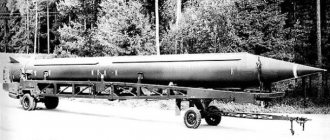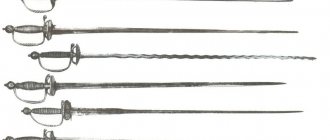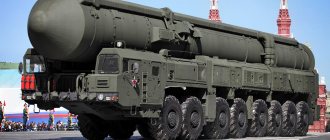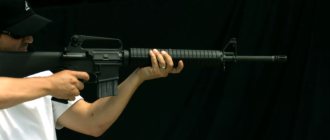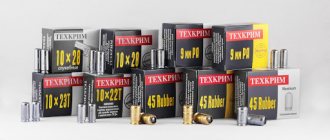Since ancient times, humanity has tried to achieve victory in a clash with the enemy at the maximum possible distance, so as not to destroy its own warriors. Slings, bows, crossbows, then guns, now rockets, shells and bombs - they all need an accurate calculation of the ballistic trajectory. And if with ancient military “equipment” it was possible to track the point of impact visually, which made it possible to learn and shoot more accurately next time, then in the modern world the destination point is usually so far away that it is simply impossible to see it without additional devices.
What is ballistic trajectory
This is the path that some object travels. It must have a certain initial speed. It is affected by air resistance and the force of gravity, which eliminates the possibility of moving in a straight line. Even in space, such a trajectory will be distorted under the influence of gravity of various objects, although not as significantly as on our planet. If you do not take into account the resistance of air masses, then most of all such a movement process will resemble an ellipse.
Another option is hyperbole. And only in some cases it will be a parabola or a circle (when reaching the second and first escape velocity, respectively). In most cases, such calculations are carried out for rockets. They tend to fly in the upper layers of the atmosphere, where the influence of air is minimal. As a result, most often the ballistic trajectory still resembles an ellipse. Depending on many factors, such as speed, mass, type of atmosphere, temperature, planetary rotation, and so on, individual parts of the path can take a wide variety of forms.
Firing angle to hit a stationary target
Now things get interesting.
If a projectile has a constant speed (S) and gravity is (G), then at what angle must it be fired to hit a stationary target?
Bach. Now we have two equations and two unknowns. Let's analyze them.
- First equation, two unknowns (t, θ)
- Second equation, two unknowns (t, θ)
- Calculate t from (1)
- Substitute (3) into (2)
- Trigonometric substitution: sin θ/cosθ = tanθ
- Trigonometric substitution: 1/(cos θ)^2 = 1 + (tan θ)^2
- Let's expand and transform
- Formula for the roots of a quadratic equation
- Multiply the top/bottom by -S^2/x. Let's move S^4/x^2 to the root
- Apply arctangent to each part
TA-dah! As a result, we got two angles. One high and one low. Here's what it looks like in practice.
Ballistic trajectory calculation
In order to understand exactly where the released body will fall, differential equations and the method of numerical integration are used. The ballistic trajectory equation depends on many variables, but there is also a certain universal version that does not provide the required accuracy, but is quite sufficient for the example.
y=x-tgѲ0-gx2/2V02-Cos2Ѳ0, where:
- y is the maximum height above the ground.
- X is the distance from the starting point to the moment when the body reaches the highest point.
- Ѳ0 – throwing angle.
- V0 – initial speed.
Thanks to this formula, it becomes possible to describe the ballistic flight trajectory in airless space. It will turn out to be in the shape of a parabola, which is typical for most options for free movement in such conditions and in the presence of gravity. The following characteristic features of such a trajectory can be identified:
- The most optimal elevation angle for maximum distance is 45 degrees.
- The object has the same speed both during launch and at the moment of landing.
- The angle of the throw is identical to the angle at which the fall will occur.
- The object flies to the top of the trajectory in exactly the same time as it then takes to fall down.
In the vast majority of calculations of this kind, it is customary to neglect the resistance of air masses and some other factors. If you take them into account, the formula will be too complicated, and the error is not so large as to significantly affect the effectiveness of the hit.
Ballistics for dummies
From Muzzle to Target: Basic Concepts Every Shooter Should Know.
You don't need a university degree in math or physics to understand how a rifle bullet travels.
This exaggerated illustration shows that the bullet, always deviating only downwards from the direction of the shot, crosses the aiming line at two points. The second of these points is located exactly at the distance at which the rifle was zeroed. One of the most successful recent projects in book publishing is a series of books called “... for dummies.” Whatever knowledge or skill you want to master, there is always a corresponding “dummies” book for you, including such subjects as raising smart children for dummies (honestly!) and aromatherapy for them. It is interesting, however, that these books are not written for fools and do not treat the subject at a simplistic level. In fact, one of the best books I ever read about wine was called Wine for Dummies.
So, probably no one will be surprised if I say that there should be “Ballistics for Dummies”. I hope that you will agree to accept this title with the same sense of humor with which I offer it to you.
What, if anything, do you need to know about ballistics to become a better marksman and a better hunter? Ballistics is divided into three sections: internal, external and terminal.
Internal ballistics looks at what happens inside the rifle from the moment of ignition until the bullet exits the muzzle. In truth, internal ballistics only concerns the reloaders; they are the ones who assemble the cartridge and thereby determine its internal ballistics. You have to be a real nerd to start collecting cartridges without first receiving a basic understanding of internal ballistics, if only because your safety depends on it. If, both at the shooting range and on the hunt, you shoot only factory cartridges, then you really don’t need to know anything about what’s happening in the barrel: anyway, you can’t influence these processes in any way. Don't get me wrong, I'm not discouraging anyone from taking an in-depth study of internal ballistics. It's just that in this context it has no practical meaning.
As for terminal ballistics, yes, here we have some freedom, but no more than in the choice of bullet loaded in a homemade or factory cartridge. Terminal ballistics begins the moment the bullet penetrates the target. This is a science that is as qualitative as it is quantitative, because there are many factors that determine lethality, and not all of them can be accurately modeled in the laboratory.
What remains is external ballistics. It's just a fancy term for what happens to a bullet from muzzle to target. We will consider this subject at an elementary level; I myself don’t know the subtleties. I must admit to you that I passed mathematics in college on the third try, and completely failed physics, so believe me, what I am going to talk about is not difficult.
To understand what happens to a bullet from muzzle to target, at least as much as we hunters need to, we need to understand some definitions and basic concepts just to put everything into perspective.
Definitions
These 154 grain (10g) 7mm bullets have the same BC of 0.273, but the left flat face has a BC of 0.433 while the SST right has a BC of 0.530.
Line of sight (LO)
– straight from the arrow’s eye through the aiming mark (or through the rear sight and front sight) to infinity.
Throwing line (LB)
– another straight line, the direction of the axis of the barrel bore at the moment of the shot.
Trajectory
- the line along which the bullet moves.
A fall
– reduction of the bullet’s trajectory relative to the throwing line.
We've all heard someone say that a certain rifle shoots so flat that the bullet simply doesn't drop within the first hundred yards. Nonsense. Even with the most flat supermagnums, from the very moment of departure the bullet begins to fall and deviate from the throwing line. A common misunderstanding stems from the use of the word “lift” in ballistics tables. The bullet always falls, but it also rises relative to the aiming line. This apparent awkwardness occurs because the scope is positioned above the barrel, and therefore the only way to cross the line of sight with the bullet's trajectory is to tilt the scope down. In other words, if the throwing line and the aiming line were parallel, the bullet would leave the muzzle one and a half inches (38mm) below the aiming line and begin to fall lower and lower.
Adding to the confusion is the fact that when the scope is set so that the line of sight intersects the trajectory at some reasonable distance - 100, 200 or 300 yards (91.5, 183, 274 m), the bullet will cross the line of sight before that . Whether we're shooting a .45-70 zeroed at 100 yards or a 7mm Ultra Mag zeroed at 300, the first intersection of the trajectory and the line of sight will occur between 20 and 40 yards from the muzzle.
In the case of the .45-70, we will see that to hit the target at 100 (91.4 m) yards, our bullet will cross the line of sight about 20 yards (18.3 m) from the muzzle. The bullet will then rise above the line of sight to its highest point at about 55 yards (50.3 m) - about two and a half inches (64 mm). At this point the bullet begins to descend relative to the line of sight, so that the two lines will intersect again at the desired distance of 100 yards.
For a 7mm Ultra Mag zeroed at 300 yards (274 m), the first crossover will occur at about 40 yards (37 m). Between this point and the 300 yard mark our trajectory will reach a maximum height of three and a half inches (89 mm) above the line of sight. Thus, the trajectory intersects the aiming line at two points, the second of which is the shooting distance.
Halfway Trajectory
Both of these 300-grain .375 bullets have the same cross-sectional density of 0.305, but the left-hand, pointy-nose, boat-stern bullet has a BC of 0.493, while the roundnose only has a BC of 0.250.
And now I will touch on one concept that is rarely used these days, although in those years when I began to master rifle shooting as a young scoundrel, the halfway trajectory was the criterion by which ballistic tables compared the effectiveness of cartridges. Half-way trajectory (TMT) is the maximum height of the bullet above the aiming line, provided that the weapon is zeroed at a given distance. Typically, ballistic tables gave this value for 100-, 200-, and 300-yard ranges. For example, the TPP for a 150 grain (9.7 g) bullet in the 7 mm Remington Mag cartridge according to the 1964 Remington catalog was half an inch (13 mm) at 100 yards (91.5 m), 1.8 inches (46 mm) at 200 yards (183 m) and 4.7 inches (120 mm) at 300 yards (274 m). This meant that if we zeroed our 7 Mag at 100 yards, the trajectory at 50 yards would rise above the line of sight by half an inch. When zeroed at 200 yards it will rise 1.8 inches at the 100 yard mark, and when zeroed at 300 yards we get 4.7 inches of lift at 150 yards. In fact, the maximum ordinate is reached slightly further than the middle of the zeroing distance - about 55, 110 and 165 yards, respectively - but in practice the difference is insignificant.
Although the TPP was useful information and a good way to compare different cartridges and loads, the modern system of reduction for the same distance zeroing height or reducing the bullet at different points in the trajectory is more meaningful.
Lateral Density, Ballistic Coefficient
This quartet of seven-millimeter bullets exhibits successive degrees of streamlining.
The round nose bullet on the left has a ballistic coefficient of 0.273, the bullet on the right, Hornady A-Max, has a ballistic coefficient of 0.623, i.e. more than twice as much. After leaving the barrel, the bullet's flight path is determined by its speed, shape and weight. This brings us to two buzzwords: lateral density and ballistic coefficient. Lateral density is the weight of the bullet in pounds divided by the square of its diameter in inches. But forget about it, it's just a way to relate the weight of a bullet to its caliber. Take, for example, a 100-grain (6.5 g) bullet: in a seven-millimeter caliber (.284) it is a fairly light bullet, but in a six-millimeter (.243) it is quite heavy. And in terms of cross-sectional density it looks like this: a 100-grain seven-millimeter bullet will have a cross-sectional density of 0.177, and a six-millimeter bullet of the same weight will have a cross-sectional density of 0.242.
Perhaps the best understanding of what is considered light and what is heavy can be obtained from comparing bullets of the same caliber. While the lightest seven-millimeter bullet has a cross-sectional density of 0.177, the heaviest 175-grain (11.3 g) bullet has a cross-sectional density of 0.310. And the lightest, 55-grain (3.6 g), six-millimeter bullet has a transverse density of 0.133.
Since cross-sectional density is related only to the weight and not the shape of the bullet, it turns out that the most blunt-nosed bullets have the same cross-sectional density as the most streamlined bullets of the same weight and caliber. Ballistic coefficient is a completely different matter; it is a measure of how streamlined a bullet is, that is, how effectively it overcomes drag in flight. The calculation of the ballistic coefficient is not well defined; there are several methods that often give inconsistent results. Adding to the uncertainty is the fact that the BC depends on the speed and altitude above sea level.
Unless you're a math geek obsessed with calculations for the sake of calculations, then I suggest just doing what everyone else does: using the value provided by the bullet manufacturer. All manufacturers of self-loading bullets publish lateral density and ballistic coefficient values for each bullet. But for bullets used in factory cartridges, only Remington and Hornady do this. In the meantime, this is useful information, and I think all ammo manufacturers should provide it both in ballistic tables and directly on the boxes. Why? Because if you have ballistics programs on your computer, then all you need to do is enter the muzzle velocity, the weight of the bullet and its ballistic coefficient, and you can draw a trajectory for any shooting distance.
An experienced reloder can estimate the ballistic coefficient of any rifle bullet with decent accuracy by eye. For example, no round nose bullet, from 6mm to .458 (11.6mm), has a ballistic coefficient greater than 0.300. From 0.300 to 0.400 - these are light (low cross-sectional density) hunting bullets, pointed or with a recess in the nose. Over .400 is a moderately heavy bullet for the caliber with an extremely streamlined nose shape.
If the BC of a hunting bullet is close to 0.500, it means that the bullet combines near-optimal cross-sectional density and a streamlined shape, such as Hornady's 7mm 162-grain (10.5 g) SST with a BC of 0.550 or 180- grain (11.7 g) XBT from Barnes in thirty gauge with a BC of 0.552. This extremely high BC is typical of round tail (“boat stern”) bullets with a polycarbonate nose like the SST. Barnes, however, achieves the same result with a very streamlined ogive and an extremely small nose front.
By the way, the ogive is the part of the bullet in front of the leading cylindrical surface, simply what forms the nose zeros. If you look at the bullet from the side, the ogive is formed by arcs or curved lines, but Hornady uses an ogive of converging straight lines, that is, conical.
If you put flat-nose, round-nose and pointed-nose bullets side by side, then common sense will tell you that the pointed-nose is more streamlined than the round-nose, and the round-nose, in turn, is more streamlined than the flat-nose. It follows that, other things being equal, at a given distance, the sharp-nosed one will decrease less than the round-nosed one, and the round-nosed one - less than the flat-nosed one. Add a boat stern and the bullet becomes even more aerodynamic.
Take as an example Barnes's 180-grain (11.7 g) X-Bullet 30-gauge, available in both flat-end and boat-stern. The nose profile of these bullets is the same, so the difference in ballistic coefficients is due solely to the shape of the end. A flat end bullet will have a BC of 0.511, while a boat stern will give a BC of 0.552. As a percentage, you might think that this difference would be significant, but in fact, at five hundred yards (457 m) a boat-stern bullet will drop only 0.9 inches (23 mm) less than a flat-faced bullet, with other equal conditions.
Straight Shot Distance
Aerodynamically, the shape may be good, like the 120-grain (7.8 g) seven-millimeter bullet on the left, but due to its low cross-sectional density (i.e., weight for that caliber), it will lose velocity much more quickly.
If the 175-grain (11.3 g) bullet (right) is fired at 500 fps (152 m/s) slower, it will catch up with the 120-grain bullet at 500 yards (457 m). Another way to evaluate trajectories is to determine the direct shot distance (DSD). Just like the halfway trajectory, point-blank distance has no effect on the actual trajectory of the bullet, it is simply another criterion for zeroing the rifle based on its trajectory. For deer-sized game, point-blank range is based on the requirement that the bullet enter a 10-inch diameter kill zone when aimed at its center without drop compensation.
Essentially, it's as if we took a perfectly straight imaginary pipe with a diameter of 10 inches and superimposed it on a given path. With the muzzle cut in the center of the pipe at one end, the direct shot distance is the maximum distance over which the bullet will fly inside this imaginary pipe. Naturally, in the initial section the trajectory should be directed slightly upward, so that at the point of the highest rise the bullet only touches the top of the pipe. With this type of aiming, the DPV is the distance at which the bullet will pass through the bottom of the pipe.
Consider a .30 caliber bullet fired from a .300 magnum at 3,100 feet per second (945 m/s). According to the Sierra manual, zeroing the rifle at 315 yards (288 m), we get a direct shot distance of 375 yards (343 m). The same bullet fired from a .30-06 rifle at 2800 fps, zeroed at 285 yards (261 m), would give us a DPV of 340 yards (311 m) - not as big a difference as you might think , Truth?
Most ballistics programs will calculate point-blank range, you just need to enter the bullet's weight, BC, velocity and kill zone size. Naturally, you can enter a four-inch (10 cm) killing zone if you hunt woodchucks, and an eighteen-inch (46 cm) kill zone if you hunt elk. But personally, I have never used DPV; I consider it careless shooting. Moreover, now that we have laser rangefinders, it makes no sense to recommend such an approach.
John R. Sandra
Differences from flooring
This name refers to another version of the object’s path. Flat and ballistic trajectories are somewhat different concepts, although their general principle is the same. In fact, this type of movement implies the maximum possible movement in the horizontal plane. And throughout the entire path the object maintains sufficient acceleration. Ballistic movement is necessary for moving over long distances. For example, the flat trajectory is most important for a bullet. She must fly straight enough for as long as possible and punch through everything that gets in her way. On the other hand, a rocket or a cannon shell causes maximum destruction precisely at the end of its movement, since it gains the maximum possible speed. In the interval of their movement they are not so crushing.
Equations of motion
The task always starts the same way.
We have a shooter and a target: at what angle must the projectile be fired in order for it to hit the target? There are four basic equations of motion. In this article we will use only one.
To explain it in words, the final position is EQUAL to the starting position PLUS the velocity times the time PLUS half the acceleration times the time squared. This is a simple equation that requires a little algebra and a few trigonometric identities to solve.
Modern use
Ballistic trajectory is most often used in the military sphere. Rockets, shells, bullets, etc. all travel far, and there are many variables to consider to get an accurate shot. In addition, the space program is also based on ballistics. Without it, it is impossible to accurately launch a rocket so that it does not ultimately fall to the ground, but makes several orbits around the planet (or even breaks away from it and goes further into space). In general, almost everything that can fly (regardless of how it does so) is somehow related to a ballistic trajectory.
Range
When developing video games, we will likely need to know the maximum range of a projectile.
The AI needs to understand how close to get, and players need clear, visual indicators of danger zones. There is a very simple equation for maximum range on a flat surface. We will immediately rush into the pool headlong and start with a generalized view.
If a projectile with constant speed (S) and gravity (G) is given, what will be its maximum flight range?
- Let us substitute the variables known to us (y0, S, G) into the basic equation of motion.
- Let's apply the formula for the roots of a quadratic equation. Let's discard the smaller value.
- Let's substitute t into x = S*cos θ*t and simplify.
Intercontinental ballistic missiles
Such missiles move along a special ballistic trajectory. At first they move vertically upward. This happens over a short period of time. Next, the control system turns the object towards the target.
ICBMs have a multi-stage design. Thanks to this, such a rocket can even reach a target located in the other hemisphere of the Earth. After the fuel burns out, the used ICBM stage is separated, and the next one is connected at the same second. Upon reaching a certain height and speed, a rocket of this type rushes towards the ground, towards the intended target.
Visual imperfection
Take a look at the gif shown above.
Once the kettle starts firing, things look pretty good. The high arc is beautiful and pleasing to the eye. The low arc feels crisp and effective. However, as the range increases, everything becomes less beautiful. The low arc is almost flat. The high arc is excessively high. This is the problem with a constant velocity projectile. It only looks good when the target is on the edge of its range.
Is there a better way?
Constant speed with moving target
But what if we need to hit a moving target with a projectile at a constant speed?
Oh-oh. This is a very confusing task! I don’t even know how to approach her. In my entire career I have never had to solve it. Games usually don't require precision artillery. It's just not interesting! Instead, we approximate the future position and aim at a random point near it. Players perceive artillery fire as a shower of stupid shells rather than laser-guided guaranteed death.
In the process of writing this post, I found a solution to the problem of a projectile with a constant speed and a moving target, which was not available on the Internet in finished form. It's worth noting that you probably won't need to implement it in your game. But I spent a lot of time on it, so I don't want it to go to waste!
Fourth degree equations
Most likely, you won't want to use it in your game precisely because of the fourth degree equations. Essentially, the solution requires one of these equations.
Quadratic equations have a simple and elegant solution in the form of the formula for the roots of a quadratic equation.
Cubic equations can be solved in several different ways. However, equations of the fourth degree are a real headache. Solving such equations is far beyond the scope of this article. Honestly, and beyond my mathematical abilities. Luckily for us, the 1990 book Graphics Gems I has code for solving fourth-order equations. I used this code for my demo. I cannot guarantee its accuracy or numerical stability; use it with extreme caution.
Method one
So let's solve it. What should be the angle at which a projectile is fired at a constant speed at a moving target? This method is taken from a 2007 post by James McNeill and updated with information from Ryan Jackett.
- Where P is the target position and V is the target speed
- Square both sides
- Let's transform
- We calculate the coefficients of the fourth order equation and insert it into SolveQuartic
- We use t to calculate the position of the target when calculating the trajectory to a fixed point.
The method works. All complex tasks are performed by SolveQuartic. We then use the stationary target solution outlined above.
Method two
Before I found the first way, I came up with a solution in another way. It consists of many more steps. However, I find the end result more elegant. Plus I wasted about eight sheets of paper and I don't want those trees to sacrifice themselves for nothing.
Damn it. 32 steps!? It's worse than it seems.
1–7
— declare variables.
8–11
— we declare a system of equations. Four equations, four unknowns - d, e, f, t.
12–15
— we calculate the value of d using (8). Multiply d^2 by the future.
16–19
— we calculate the value of f using (10). Multiply f^2 by the future.
20–24
— we calculate the value of e using (9). Multiply e^2 by the future.
25–27
— we calculate the value of e^2 using (11). Substitute d^2 and f^2.
28–30
— we equate (27) to (24). We multiply by t^2 and transform it into a fourth-degree equation.
31
— we substitute the coefficients in SolveQuartic.
32
— substitute positive real roots into (14), (18), (23) for d, e, f.
The code is quite short. There are more lines devoted to variable declarations than to the calculations themselves! Of course, except for SolveQuartic.
Tools
I used several tools when creating this post. Many of them were new to me.
- Unity to create a demo.
- Paper, Affinity Designer and MSPaint for creating images.
- Arachnid Latex + MathJax for LaTeX formulas.
- FFmpeg for converting a sequence of screenshots into animation.
- Gfycat for embedding animations.
- Teapot from Utah. Pew Pew!
LaTeX syntax is terrible and difficult to learn. All LaTeX formulas can be found here. Here's an example:
Content
- 1 Formulas 1.1 General
- 1.2 Ballistics
- 1.3 Commercial use
- 2.1 Background
- 3.1 Unstable nature of bullet ballistic coefficients
Links[edit]
- Courtney, Michael; Courtney, Amy (2007). "The Truth About Ballistic Coefficients." arXiv:0705.0389 [physics.pop-ph].
- “Recent Trends in Sustainable Development and Management Strategies” by Dr. VS Gajavelli, Dr. Kapil Chaturvedi, Dr. Abhishek Narain Singh
- Moss, Leeming and Farrar (1995). Brassey's Land Warfare Series: Military Ballistics
. Royal Military College of Science, Shrivenham, UK. p. 86. ISBN 978-1857530841. - Kline, Donna (2002). External Ballistics, Trajectory Explained, Part 3 of AAABerger Bullets; p161, ISBN 978-0-615-63762-4
- JBM Ballistics Online Trajectory Calculator
- JBM Online Ballistic Trajectory Calculator
- External ballistics and ballistic coefficients
- ↑
Best Ballistic Coefficient by Brian Litz, Ballistician Berger Bullets. Archived August 2, 2009, at the Wayback Machine. - Ballistic Coefficient Basics
- "Berger Bullet Specifications". Archived from the original on 2016-03-06. Retrieved January 1, 2013.
- Lapua bullets technical information Archived 2012-02-17 at the Wayback Machine
- Technical information Nosler AccuBond Longe Range
- Form Factors: A Useful Analysis Tool by Brian Litz, Chief Ballistician for Berger Bullets
- Product Brochure .338 Lapua Magnum. Archived September 27, 2011, at the Wayback Machine.
- LM class bullets, very high BC bullets for long winds. Archived February 19, 2008, at the Wayback Machine.
- McDonald, William and Algren, Ted. Sierra Boot Guide, 5th Ed., Section 2.5. Examples of measuring ballistic coefficients, 2003.
- Litz, Brian. Applied ballistics for long-range shooting. Cedar Springs, MI: Applied Ballistics, LLC, 2009a, 2nd edition, 2011.
- Emily Bohnenkamp, Bradford Hackert, Maurice Motley, and Michael Courtney, Comparison of Advertised Ballistic Coefficients with Independent Measurements, DTIC, 2012. https://www.dtic.mil/cgi-bin/GetTRDoc?AD=ADA554683
- Alex Halloran, Colton Huntsman, Chad Demers, and Michael Courtney, More Imprecise Ballistic Coefficient Specifications, DTIC, 2012. https://www.dtic.mil/cgi-bin/GetTRDoc?AD=ADA555975
- ↑
Courtney, Elya, Colleen Morris and Michael Courtney. "Precise measurements of drag coefficients in free flight using amateur Doppler radar." Cornell University Library (2016). arXiv: 1608.06500
